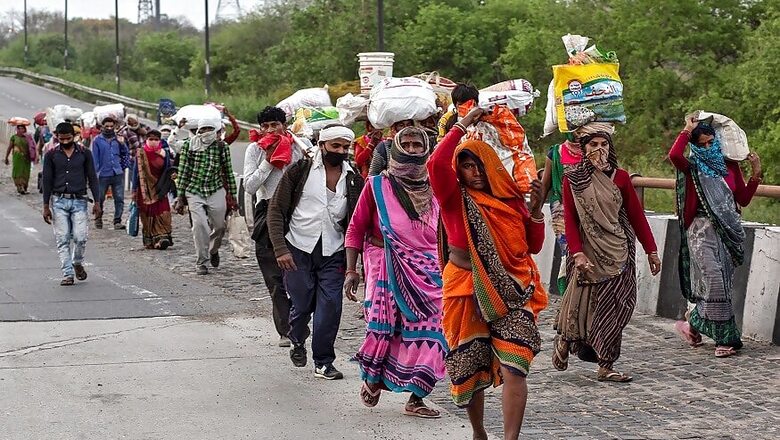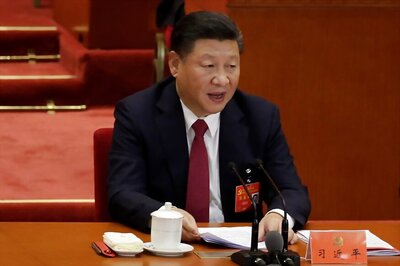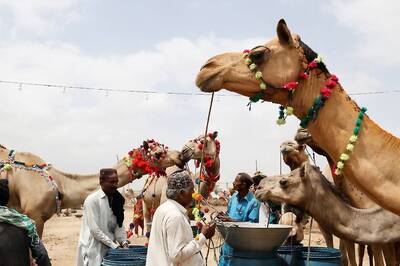
views
At least 14 crore migrant workers have left cities for their homes during the Covid-19 lockdown, according to an estimate by academic Ajay Dandekar. This huge reverse migration is going to result in a "massive economic and societal crisis" unless major structural changes are brought about by the state, he says in an interview to News18. Dandekar, a trained historian who has spent the last 20 years researching and writing about rural India, teaches at the School of Humanities and Social Sciences at Shiv Nadar University.
Different estimates have been presented of the number of migrant workers who have been trying to get to their homes since the lockdown was first imposed on March 25. What is that number according to you?
The number is hard to arrive at because neither the National Sample Survey Office (NSSO) nor the census specifically has tabulated entries for 'migrant workers'. So people are arriving at their own estimates based on various calculations. To my mind this number would be more than 140 million or 14 crore. But I should add here this is just an estimate. Actual numbers may vary.
Many states to which migrant workers are now returning — Bihar, Odisha, Rajasthan, Madhya Pradesh, Jharkhand, Chhattisgarh, parts of Maharashtra and Gujarat — already face acute distress in terms of agrarian crisis, droughts, and where welfare schemes are not implemented very efficiently. What sort of pressure are these states going to be under now?
India since the 1990s is in the midst of an agrarian crisis. The average landholding has been reduced to 1.12 hectares, and more than 85% of agrarian households in our country are marginal or small farmers. The sector is starved of real investments for the last three decades and more.
Migration from rural to peri-urban areas as a large phenomenon perhaps is post the new economic policy of the 90s. This migration can be characterised as distress migration and it happened because the rural was not in a position to sustain livelihoods beyond a point and the new economic policy did seem to suggest an opening for some livelihoods in the peri-urban and urban areas, largely in the construction sectors, semi-skilled sectors, MSMEs and in the growing services sectors. However, the challenges of dignified livelihood even then remained a major concern.
Now with the return of so many people to their villages, the rural infrastructure is going to be put under tremendous stress. Our villages are not in a position to sustain and provide for livelihoods for those who are returning. The migration in the first place happened because of lack of opportunities in the rural locale. Now, unless we initiate a major structural change in our economic policy, we are staring at a crisis of very large proportions.
Do you fear that more and more people are going to be trapped by moneylenders when they return to their villages? Also, what sort of impact do you feel the recent economic packages announced by the finance minister are going to have on the migrant workers?
The majority of agrarian households in the country are indebted anyway. Moneylenders are not going anywhere. But I think moneylenders are not going to lend very easily. Banks always write off loans, moneylenders do not.
When people reach their homes, their mindset is not going to be to return to their jobs in the destination areas as soon as possible. Due to the inhuman treatment they experienced post the lockdown and while on return to homes, they will think 10 times before going to cities again. So the remittances that they would send back to their homes in the villages are going to stop. In this context my fear actually is that informal sources of lending may dry up as the collateral is not available for those loans.
Which is why it is all the more important that at this juncture we forget all about fiscal measures and actually put money in the hands of the people. The first impulse should be to help people survive this catastrophe and subsequently to regenerate demand in rural India. A credit-based system in which you put credit in the system and expect farmers and MSMEs to return to their peak efficiency is not going to happen because there is no demand.
Also, the MSMEs will not take that credit line in the absence of the demand. It is a vicious circle. Demand will only come from rural India. They will only spend if they have money in their hands. For India, the key to revival lies squarely in the arena of the rural and how well we treat our rural areas and support them.


















Comments
0 comment